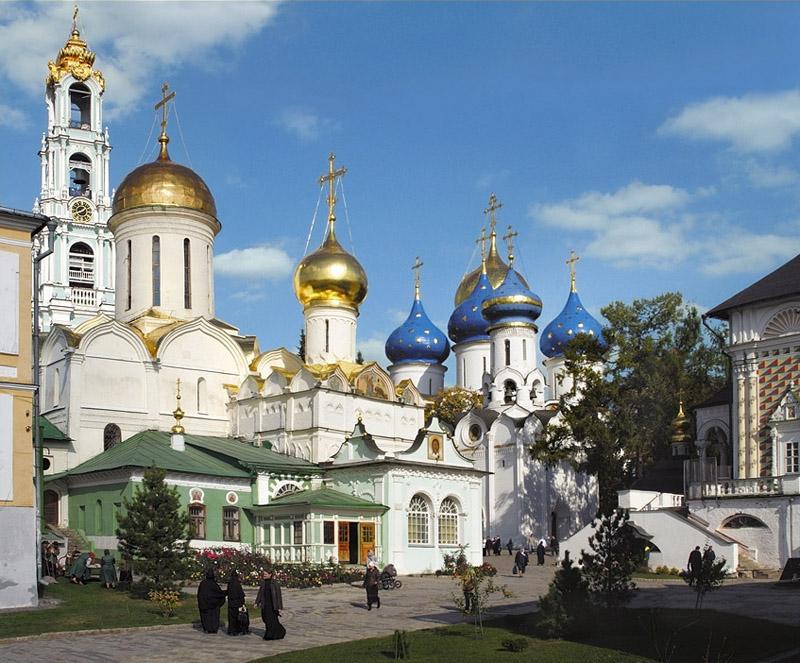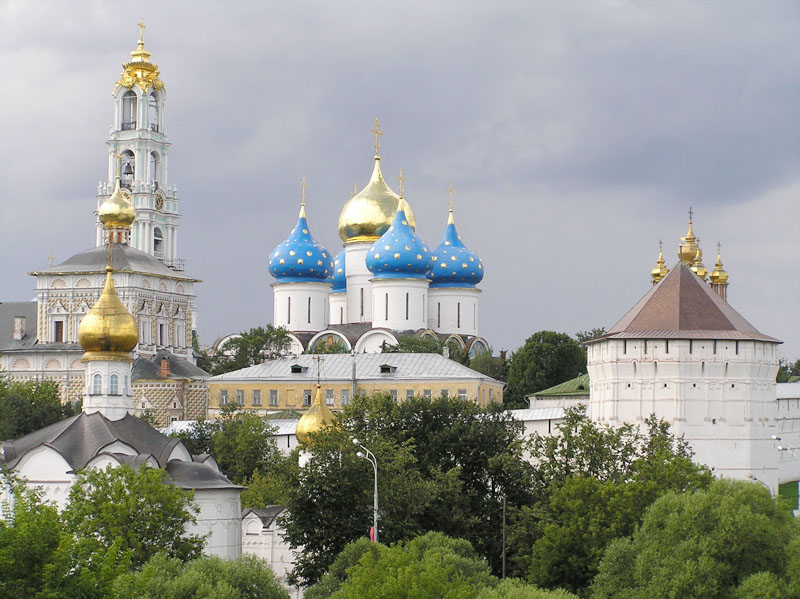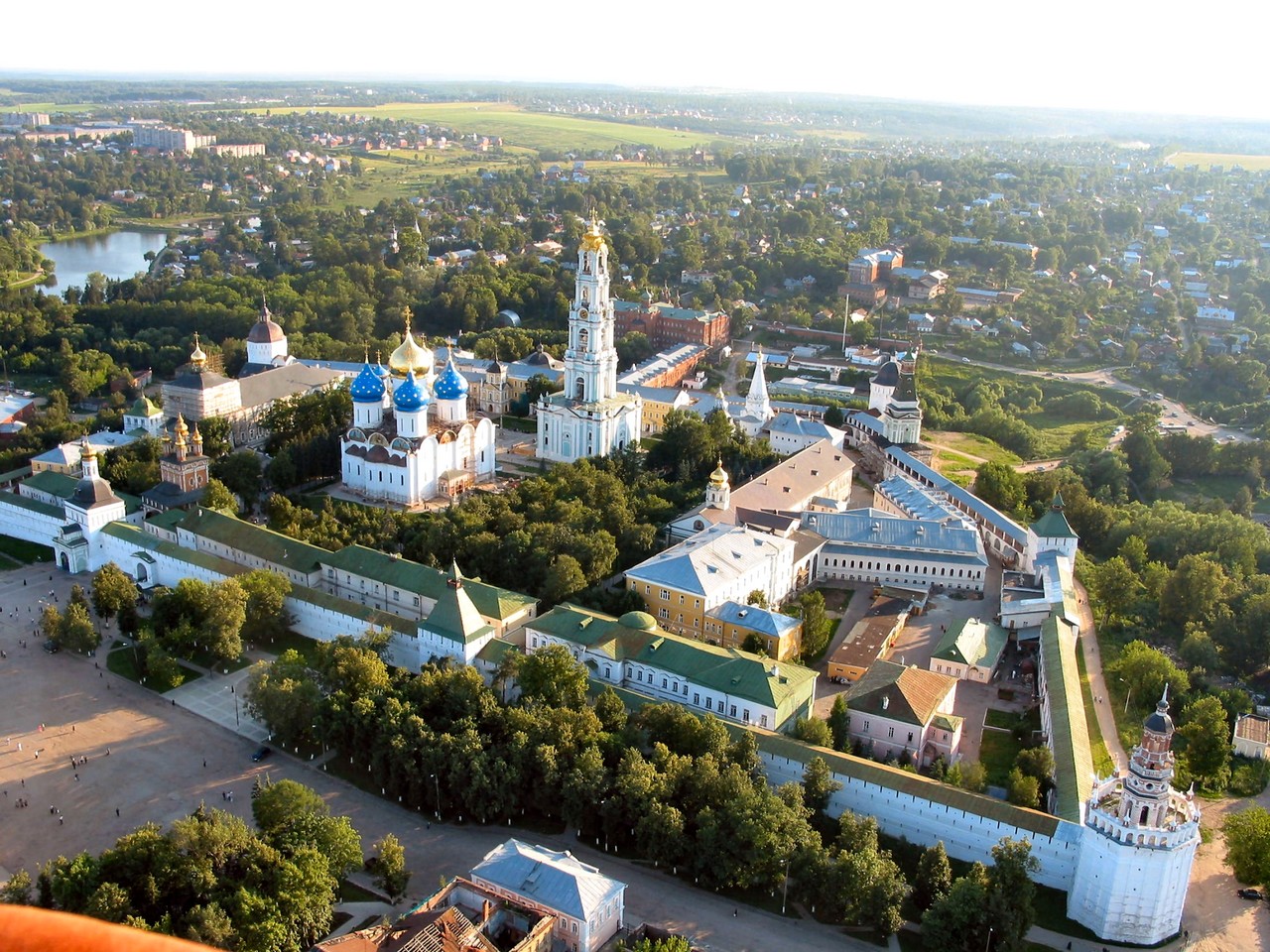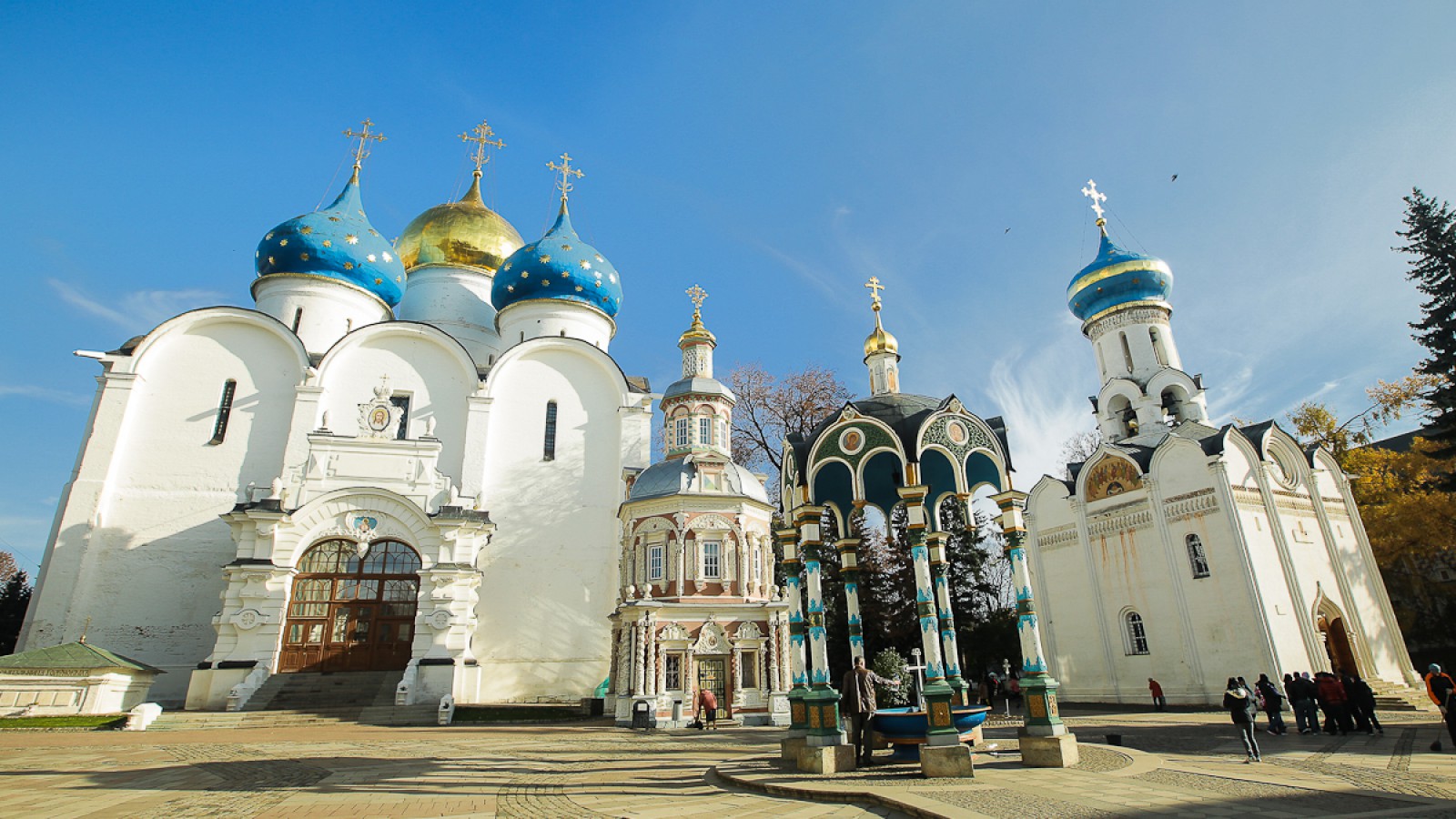The Trinity Lavra of St. Sergius is the most important Russian monastery and the spiritual centre of the Russian Orthodox Church. The monastery is situated in the town of Sergiyev Posad, about 70 km to the north-east from Moscow by the road leading to Yaroslavl, and currently is home to over 300 monks.
The monastery was founded in 1345 by one of the most venerated Russian saints, Sergius of Radonezh, who built a wooden church in honour of the Holy Trinity on Makovets Hill. Early development of the monastic community is well documented in contemporary lives of Sergius and his disciples.
In 1355, Sergius introduced a charter which required the construction of auxiliary buildings, such as refectory, kitchen, and bakery. This charter was a model for Sergius' numerous followers who founded more than 400 cloisters all over Russia, including the celebrated Solovetsky, Kirilov, and Simonov monasteries.
St. Sergius supported Dmitri Donskoi in his struggle against the Tatars and sent two of his monks, Peresvet and Oslyabya, to participate in the Battle of Kulikovo (1380). At the outbreak of the battle, Peresvet died in a single combat against a Tatar bogatyr. The monastery was devastated by fire, when a Tatar unit raided the area in 1408.
In 1744, Empress Elizabeth conferred on the cloister the dignity of the Lavra. The metropolitan of Moscow was henceforth also the Archimandrite of the Lavra. Elizabeth particularly favoured the Trinity and annually proceeded afoot from Moscow to the cloister. Her secret spouse Alexey Razumovsky accompanied her on such journeys and commissioned a baroque church to the Virgin of Smolensk, the last major shrine to be erected in the Lavra. Another pledge of Elizabeth's affection for the monastery is a white-and-blue baroque belltower, which, at 88 meters, was one of the tallest structures built in Russia up to that date. Its architects were Ivan Michurin and Dmitry Ukhtomsky.
Throughout the 19th century, the Lavra maintained its status as the richest Russian monastery. A seminary founded in 1742 was replaced by an ecclesiastical academy in 1814. The monastery boasted a supreme collection of manuscripts and books. Medieval collections of the Lavra sacristy attracted thousands of visitors. In Sergiyev Posad, the monastery maintained several sketes, one of which is a place of burial for the conservative philosophers Konstantin Leontiev and Vasily Rozanov.
After the Russian Revolution of 1917, the Soviet government closed the lavra in 1920. Its buildings were assigned to different civic institutions or declared museums. In 1930, monastery bells, including the Tsar-Bell of 65 tons, were destroyed. Pavel Florensky and his followers could hardly prevent the authorities from stealing and selling the sacristy collection but overall many valuables were lost or transferred to other collections.
In 1945, following Joseph Stalin's temporary tolerance of the church during World War II, the Lavra was returned to the Russian Orthodox Church. On April 16, 1946 divine service was renewed at the Assumption Cathedral. The lavra continued as the seat of the Moscow Patriarchate until 1983, when the patriarch was allowed to settle at the Danilov Monastery in Moscow. After that, the monastery continued as a prime centre of religious education. Important restoration works were conducted in the 1960s and 1970s. In 1993, the Trinity Lavra was inscribed on the UN World Heritage List.
The Lavra has a number of representative churches (podvorie or metochia) in its vicinity and throughout Russia. The Lavra's hieromonks have manned a number of sketes at remote locations (such as the Anzer Island in the Solovki Archipelago in the White Sea), as well as the Trinity Church on the King George Island in the Antarctic.













